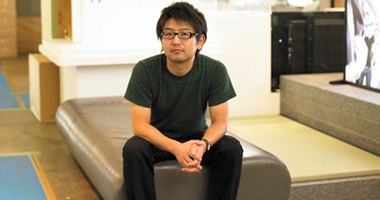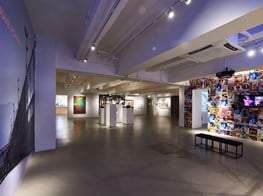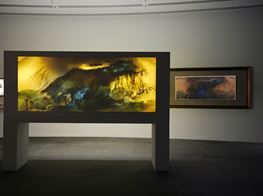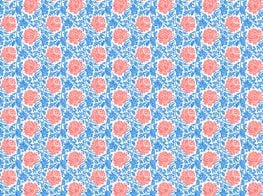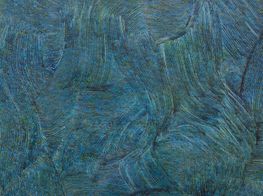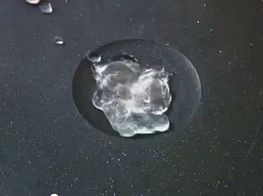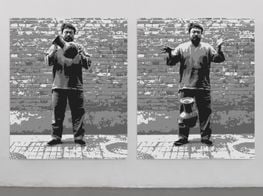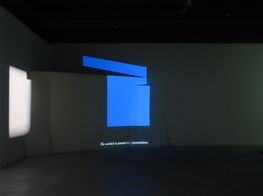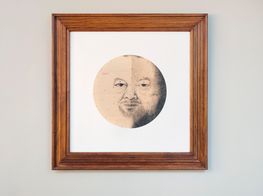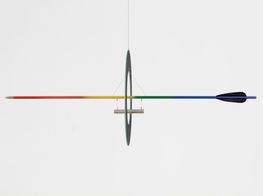Alan Lau
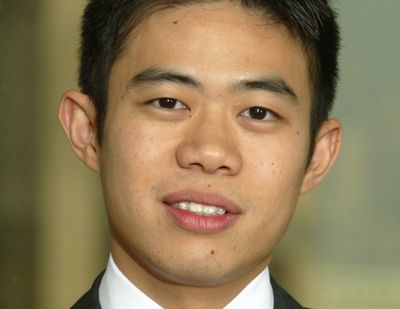
Alan Lau, based in Hong Kong, is a member of the Tate's Asia-Pacific Acquisition Committee.
He sits on the board of Para/Site, has served as the 'Mayor' of Cao Fei's RMB City and helped bring Xu Bing's Forest Project to Hong Kong.
Earlier this year, Lau became one of the first Hong Kong collectors to donate a major work to the West Kowloon Museum when he gifted the work Guards Kissing by Turner Prize nominee, Tino Sehgal.
Sehgal has since been awarded the Golden Lion at the Venice Biennale. Anna Dickie caught up with Alan in Hong Kong.
ADHow did you start collecting contemporary art?
ALI started collecting about 7 or 8 years ago. Most people don't grow up thinking they are going to be "collectors of art", and becoming a collector can start in random ways. For me, it was as simple as a move to a new office that was the trigger. I wanted a painting for the office wall, but I wanted something very Hong Kong.
There was only one person who came to mind at that time and actually then he wasn't even recognized as an artist. It was Tsang Tsou Choi or the "King of Kowloon" known for his graffiti calligraphy. To me and at that time, his work really epitomized Hong Kong. Through various friends I was able to buy a piece by him, and it was later shown at the Venice Biennale in 2003. It was my first piece. From then I started to learn more and I became increasingly interested in collecting.
ADBut had you been interested in art before you began to collect?
ALYes, I had become fascinated with art much earlier. Growing up in Hong Kong I received no training in art history, but I was curious and I picked up various books so I began to read about Picasso, Warhol and Monet. I never imagined that interest would develop into collecting.
While I was studying in the UK, I went to see Saatchi's collection and I remember seeing a shark in a tank and a pool of oil and I was fascinated by the question "Is that art?". These works left an impression, but it was really not until I was back in Hong Kong that I began converting that interest into a passion for collecting. Once I started collecting I was immediately interested in more challenging and conceptually focused art.
ADCan you describe further the type of art you collect?
ALI am very interested in art with a strong underlying concept. I don't think art needs to be beautiful. It needs to engage, it needs to move me, and it needs to challenge me.
Right from the beginning there were a couple of themes and narratives that engaged me. The first theme is text and language. Some people are very graphic. I am very textual. I think language is very interesting — not just because of the power of language, but also in the way it can morph into something visual.
So for example in Xu Bing's work, I am intrigued by how he turns English into Chinese-looking characters and in doing so engages with the question of how language has affected our understanding of the world. At the recent Lehmann Maupin exhibition I found Tsang Kin-Wah's work, where he uses the written word to create extraordinary floral designs, very intriguing.
Another theme I am interested in, probably entirely because of my professional work, is art in relation to technology. So for example what Jon Rafman has done with his Google Street View project. This is a fascinating project because the images are completely objective. A normal photograph is always in some way subjective with the photographer always bringing something to bear on the image—whether by way of the angle he chooses or the manner in which he crops or frames the shot. In contrast the Google images are always shot the same way. There is no human emotion brought to bear on the image or the way it is delivered.
ADThis interest in art and technology obviously relates to your interest in Cao Fei's work. How did your relationship with Cao Fei come about and your eventual appointment as 'Mayor' to RMB City?
ALI was reading a lot about those artists who were considered interesting in China at that time. Karen Smith wrote about Cao Fei, as did Hans Ulrich. I was interested in her work. I found out Vitamin Creative Space was her gallery and I started a conversation with them about her work.
It then turned out the gallerist wanted to meet me. It was amusing in that I thought she was just being friendly when in fact she was sizing me up. It was during a time when there was a great deal of speculation in the market. Later on and during the financial crises, Cao Fai and I started to talk a lot about economics and the financial markets.
Cao Fei then decided I should be mayor for RMB City and I ended up giving an on-line speech that drew on Obama's rhetoric at the time.
ADHow do you find work now? Do you actively look?
ALYes, most certainly. Biennials are very important to me. I prefer these to art fairs. I like conceptual art so I like the critical and curatorial information that accompanies the biennials.
I also use a lot of on-line resources, like Artinfo, like Ocula. I visit galleries a lot.
ADHow did you find the Basel Hong Kong experience?
ALIn six years it has developed into this amazing art fair that nobody thought was possible. All credit to Magnus in making that happen. There is also a perfect storm of various factors that have come together to make Art Basel Hong Kong particularly good: the continued interest in Asian art, the influx of galleries and auction houses into Hong Kong, the Chinese tax issues, and so on.
There has been some criticism that the fair is not sufficiently Asia focused, but I think it is great that we have a very global fair in Hong Kong. It felt very international with a good balance of galleries from around the world, including Asia. It has saved me a trip to Basel, and I believe that people from Europe who travelled here also saw something a little different.
ADYou were in Venice recently too. How did you rate the Venice Biennale this year?
ALI love going to Venice. I did Documenta13 and the Gwangju Biennale last year and this year the Venice Biennale. As I mentioned previously I think these types of events are really amazing places to see the art. I like these events because the curators provide context for what is presented.
This year my experience at Venice was particularly good because I was fortunate to experience the Biennale as part of the Tate's Asia Pacific Acquisition Committee. As a result the artists and curators for each pavilion came and discussed the work with us.
ADI know you cannot divulge any of the works that the acquisition committee may be considering, but what works did you find personally interesting.
ALJeremy Deller's work in the British Pavilion was very good. I also found Sarah Sze's work very thoughtful. I loved Koki Tanaka's work at the Japanese Pavilion. I have collected his work for a number of years now and I feel he continues to develop as an artist. The Romanian pavilion was very good. They conducted performances relating to artworks previously shown at Venice. It was brilliant.
The Greek pavilion was very engaging with three video pieces featuring three different people, each talking very differently about money. I like this type of art - art that provides a commentary on our time. There are artists who produce work that is very personal and very introspective; and there are artists who produce work that reflects the broader context of the times. I tend to prefer the later.
ADYou talked about watching Koki Tanaka's art develop. How important is it an artist develops?
ALIt is very important. A crime worse than bad art is an artist who ceases to develop. I like to see artists develop.
ADHow important are archival issues to you when buying work?
ALI believe I am the caretaker of the works I collect. I am very inspired by Uli Sigg as a collector and this was how he referred to himself. I am therefore interested in whether a work will survive me; and I take my obligation to ensure it does very seriously. This issue almost stopped me buying a work by Nam June Paik. It didn't in the end because I had wanted to buy a piece for the longest time. In the end the piece I did buy was TV Buddha which includes a TV set, but without the old CRT display.
[http://ocula.com/artists/ai-weiwei/]
I have a set of Ai Weiwei's Colored Vases. These are Neolithic vessels from 3000-5000 B.C. which Ai Weiwei has dipped into a bucket of industrial paint. It is not only a statement of irreverence to culture, but also a gesture of cultural washing that nearly obliterates the past in favor of the contemporary. This work sits in my living room and I know it will outlast me. It would be a total crime if I screw it up. I am just the caretaker of the work. It needs to be preserved.
ADTo this end, you feel a sense of responsibility as a collector?
ALYes. I talked previously about the themes I am interested in. I am also interested in works that relate to urbanisation. A large part of my collection is about works that reflect change in society. It is almost as though I feel a sense of responsibility to document how this country has developed.
ADThis is a theme that I see a lot in the work of Hong Kong artists? There is often a sense of anxiety about the pace of change in Hong Kong.
AL[http://ocula.com/artists/lee-kit/]
Yes, I agree this is a theme that does come up. This is even apparent in the work of Lee Kit. I mentioned before there are some artists that are very personal in their approach and others who have a stronger social narrative. Lee Kit is for me an artist whose work is very personal, but he pays a great deal of attention to what is going on in Hong Kong.
He is deeply disturbed by the development in Hong Kong and that is why he moved to Taipei. If I consider his work, for example the piece in which he spent more than two years repeatedly scratching at his studio desk, then this for me becomes a very personal statement on the wider social and political anxieties in Hong Kong. The lens a collector brings obviously can change a work a great deal.
ADOther than Lee Kit, which artists from Hong Kong are you interested in?
AL[http://ocula.com/artists/ho-sin-tung/]
Tozer Pak, Tsang Kin Wah, Kwan Sheung Chi, Chow Chun Fai, Ho Sin Tung.
ADI understand you have a very interesting performance piece you bought from Tozer Pak?
ALYes, I bought the work, One Day of the Artist's Life. In doing so I literally purchased 24 hours with the artist. I still have to execute it. I am not sure when I will execute it—perhaps, to quote Lawrence Weiner, "Works of art do not need to be executed".
There was a beautiful piece by Olafur Eliasson that I loved. Vitamin Creative Space showed it at ArtHK last year. It was called A Fiercely Affectionate Sculpture and the writing that accompanied it read something like "This piece will appear and it will be yours when the right moment comes". I liked that a lot.
ADYou recently donated the performance work Guards Kissing by Tino Sehgal to M+. Tell me about how you came to own this work and what inspired you to donate it?
ALI saw Tino's work in Documenta and then in Tate Modern. I started talked to Marian Goodman about acquiring his work. After awhile I realized that his work wasn't the type of work you can collect and not share. It is work that needs to be shared and experienced to be activated.
So a conversation was started between Tino, M+ (Tobias and Lars) and myself, and everyone was enthusiastic about the idea of M+ having this work. I suppose the donation I made shows local support for the Museum.
There perhaps isn't yet a culture of donating art work, but once the museum is built this may well change. —[O]








